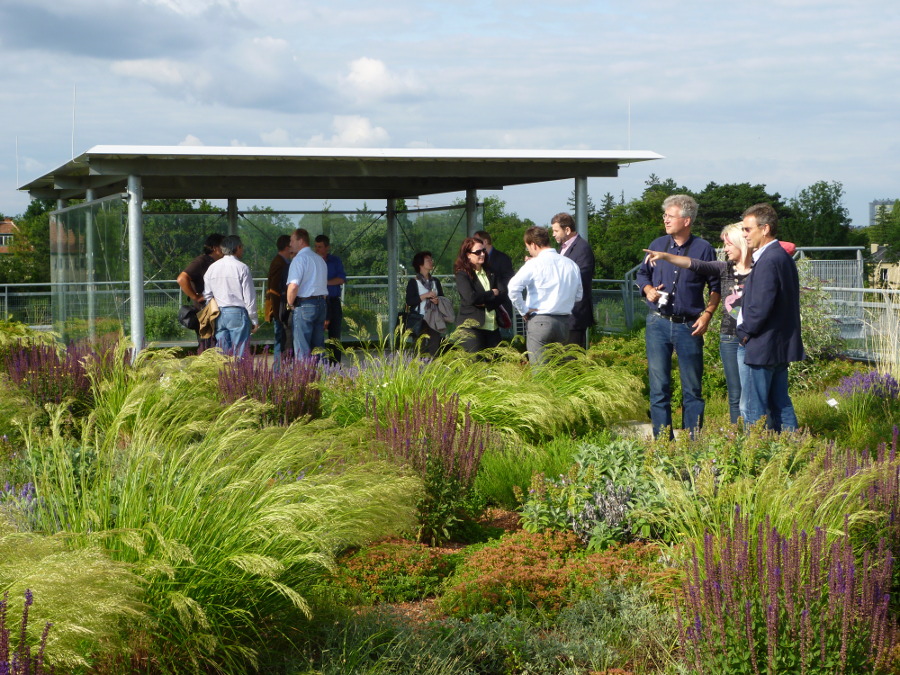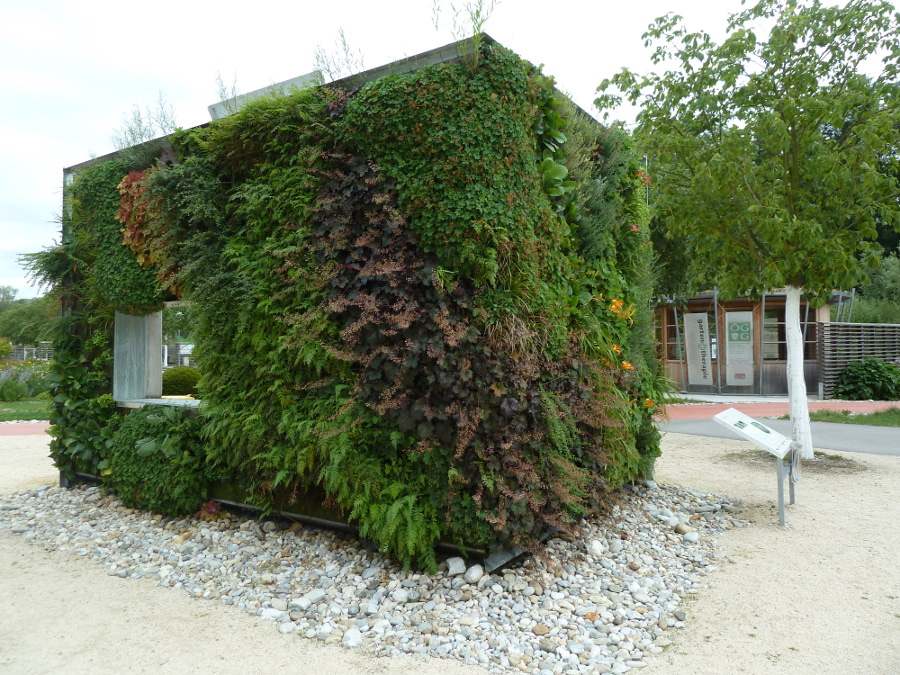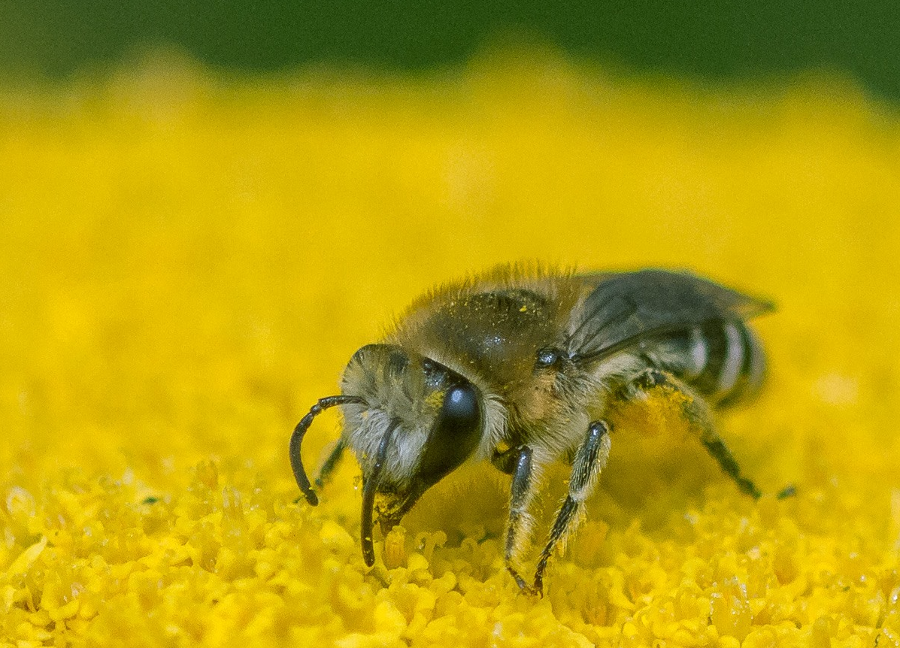GrünStattGrau – Innovations for Greening Cities "The green living laboratory"
Short Description
Status
Completed (October 2022)
Starting point, contents and results
Climate change and the challenges of fast technological change require new and different approaches that go beyond the classic innovation models.
Open innovation is an approach that provides the basis for innovation laboratories. It transforms citizens from passive consumers into active designers. The systematic and early involvement of the user perspective in the innovation process increases the potential for innovations. Building on this, the aim of this project was to implement the vision of the green city in Austria by using the innovation laboratory as an instrument.
The "GRÜNSTATTGRAU Innovation Lab" project was managed by the operating company GRÜNSTATTGRAU Forschungs- und Innovations- GmbH, which was founded specifically for the purpose, and implemented over a period of five years. It is a non-economically used and managed innovation laboratory that was built on the structures of the Austrian Association for Building Greening, which is the 100% owner of GRÜNSTATTGRAU.
From the very beginning, the GRÜNSTATTGRAU innovation laboratory has pursued the goal of addressing social transformation processes in the area of building greening, developing real world experiments that invite people to test and try things out and to create places as "experimental spaces". The aim was to bring about a paradigm shift in the innovation area of "green urban technologies", to promote awareness and quality assurance and to set up and operate a new competence center with infrastructure for the greening of the built environment. This is also against the background of implementing rapid effectiveness with building greening as climate change adaptation measures and accelerating the development of the climate-neutral cities of the future in Austria. The effects of climate change, such as urban heat, can thus be reduced and the increasing energy consumption is lowered through building optimization.
In the last five years, building greening has turned out to be a promising approach in the understanding of green infrastructure and "Nature-Based-Solutions". Wherever the built environment has no possibility for the implementation of trees or green and open spaces, the building envelope can serve as a location for vegetation. Green roofs, facades and interiors aesthetically enhance, cool and protect our cities, and greening also brings numerous benefits for people, buildings, wildlife and the environment.
The goals were divided into seven sub-goals. Those goals were to create public awareness of the benefits and advantages of greening buildings, to contribute to and further develop technical quality standards, and to provide information about aspects such as technology, synergies, costs, to provide impetus for projects and to implement them, to connect stakeholders, network partners and act as an independent expert authority. This was achieved by creating new infrastructures over a period of five years, such as the mobile test track MUGLI, which will continue to exist. MUGLI is the mobile part of GRÜNSTATTGRAU and went on a roadshow throughout Austria to enable participation processes. This initiated an interaction with the public involving the actors in open innovation processes (co-creation) and achieved a high level of acceptance.
A multitude of connected new product developments and service innovations related to greening enabled an Austrian-wide activation and social transformation. As the operating company, GRÜNSTATTGRAU Forschungs- und Innovations- GmbH was integrated as a partner in 35 of the 240 projects that were supported. This ensured that newly generated knowledge, innovations and insights flowed into the public and into other projects and were thus further developed. Open access was maintained, so now guidelines, tender checklists, supplements to standards, certifications, funding and project databases, image material, visualizations of research results and diploma theses are available. In addition to the greening projects database and best practice database, there is also a product and expert database with marked quality elements (company quality seal, 3 certifications according to the standard).
GRÜNSTATTGRAU Forschungs- und Innovations- GmbH now acts as a contact point with real development environments. Over 25 business models were positioned on the market, including the modular facade greening element "BeRTA" with an all-in-one package that was developed in the research project "50 green houses". The all-in-one green facade system is currently used as a cost-effective green option for cities thanks to the optimized approval process and appropriate funding in the City of Vienna.
Numerous research and development projects took place in the target and synergy areas, above all in Innerfavoriten. A reciprocal approach of best practice sharing between the target area in Vienna Innerfavoriten/Kretaviertel and other synergy areas in Austria was used. This happened in order to roll out more successful greening projects throughout Austria and to create green urban districts. The freely accessible online platform " gruenstattgrau.at " integrates 5 sections of information with a database of more than 400 entries and a range of services for network partners and city partnerships.
GRÜNSTATTGRAU as a physical competence center offers broad access to material infrastructures: premises, greening systems in Vienna, demonstration projects and experimental rooms show various forms of building greening. The office location in Vienna also functions as a more realistic experimental space like the GREEN.LAB in Graz. The grown network with over 380 partners mainly from the business, science and public sector and networks emerges as immaterial infrastructures. This also includes technical expertise, such as specialist committees, working groups, the Association for Greening Buildings or innovation workshops. GRÜNSTATTGRAU has an interdisciplinary team with a total of 24 employees. Stable jobs were created, with most of the employees working part-time. The processed knowledge was passed on to the general public via lectures or further training formats. Over 120 people have completed the further training program, of which 68 participants have officially completed the course with an examination and certificate and are working as consultants throughout Austria. The programs were accompanied by excursions, also by bicycle, to see the green objects. Exchange rounds, new event formats such as webinars, networking workshops and dedicated network partner days ensured the exchange between the network partners as well as that of the consultants. In-depth networking between business, science, the population, and the public sector could be ensured. The so-called initial consultation activities were combined into GREENING CHECKS and an online feasibility analysis is now available. This service provides an important basis for greening projects, with the technical and financial feasibility of the project being analyzed first. In addition, feasibility analyses and plausibility checks are offered if more concrete plans for greening the building already exist. Implementation plans are carried out by the Greening Check consultants.
Expert committees and boards have been established as RTI infrastructure, which are available to provide specific expertise and identify further research needs. In this way, innovation projects are made possible, framework conditions for research projects are created, partners are sought and networked and/or research results are translated into marketable products and services. Trends and opportunities are stored with market data compiled in the GREEN MARKET REPORT and processed in innovation workshops and training formats as the basis for understanding the sector.
National and international thematic leadership was taken as the network and competence center for sub-areas of "green building technologies". GRÜNSTATTGRAU works in close cooperation with its key partners the European Federation of Green Roof and Living Wall Associations (EFB), ÖGREEN - The Austrian Green Infrastructure Network and Nature-based enterprises Connecting Nature as well as the European Construction, built environment and energy efficient building Technology Platform (ECTP). In addition to the usual exchange of knowledge via the online platform, publications could also be placed in national and international specialist magazines. Contributions about demonstration projects can thus be given at international conferences.
Many of GRÜNSTATTGRAU's activities benefited the public. Future project initiations, research and development or implementation projects as well as impulses for new cooperation, business models, studies, data collection, prototypes or developments are important as a continuation of knowledge expansion. Building on the research, demonstration and development work that has already been carried out, attention must be paid to new topics, innovations and trends of the future. These include, for example, prefabrication and modular construction, integration of green-blue infrastructures and nature-based solutions into the existing building envelope (including the use of the building-optimizing and protective effect of building greening, taking into account the microclimate and building physics), the promotion of climate-sensitive and sustainable Building with plants, the integration of life cycle cost analysis (LCA) and CO2 -binding through e.g. biochar.
The lessons learned from the 5-year project can be used to take the next steps to change and further develop the framework conditions (especially building codes, urban development contracts, etc.).
If climate neutrality is to be achieved by 2040, all industries must pool their knowledge, live an open culture and have a broad understanding to balance carbon emissions and the uptake of carbon from the atmosphere into carbon sinks with a holistic view. Building greening is part of it!
Project Partners
Project management
GrünStattGrau Research- and Innovation-GmbH
Contact Address
GrünStattGrau Research- and Innovation-GmbH
Favoritenstraße 50
A-1040 Vienna
Tel.: +43 (650) 63 496 31
E-mail: office@gruenstattgrau.at
Web: www.gruenstattgrau.at



